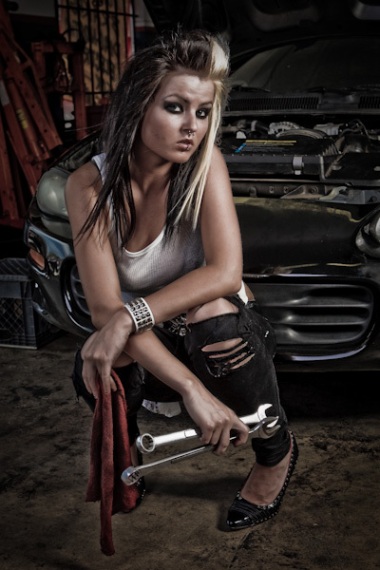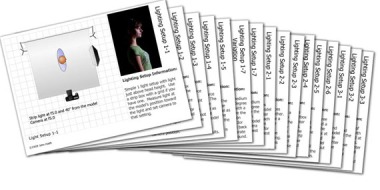For some people, photography is just part of their DNA. At the age of eleven in Washington State, John Hoeft was developing his own film and enlarging prints in his bedroom. A four year stint in the military gave him the need to document his far-ranging travels for his family back home. After fourteen post-military years in Virginia, Hoeft and his wife have been shooting and educating photographers in the Sacramento area for the past eleven years.
Crediting the digital photography revolution with recharging his photographic batteries, it was the acquisition of new digital gear that helped Hoeft make the transition from hobbyist to fee-charging photographer. Six years ago he began shooting youth sports photography. He quickly learned he was a natural instructor of sorts, and loved sharing technical information about photography with newcomers to the hobby. “I enjoy sharing the knowledge I’ve learned by putting it in a more approachable vernacular they can understand,” he says. “There was a gap in knowledge. There was enough that got you to the point you were dangerous with a camera, and then there was a big gap, and then there were experts.”

©John Hoeft
Hoeft found an opportunity to fill the photographic knowledge gap he identified. Soon he was conceiving and shooting Studio Lighting DVD: An Introduction to Studio Lighting Equipment and Lighting Setups. “It gets you far enough to the point where you can start experimenting. It will help you get the results you envision in your mind, versus what you were previously getting,” he says.

Lighting diagram cards enclosed with Hoeft's first DVD. ©John Hoeft
Involvement with his local community of photographers via Meetup.com was where Hoeft’s pedagogical nature took off. He began organizing meetings of entry-level photographers with the goal of raising the proficiency of anyone interested in attending. “At some of the meetings I found myself continually going over basics just to bring new attendants up to water level,” he explains. “I began to think that if I had something I could just hand to people with all this information on it, time wouldn’t be lost for the other photographers. The DVD is Studio Lighting 101. It’s foundational knowledge to get beginners up to speed.”
Now that Hoeft has Studio Lighting DVD available, he finds his meet-ups move into the actual shooting much more quickly, with a minimum of set-up discussion. “It really helps the folks who we have the meet-ups with, but I’ve been very surprised about the amount of interest in the DVD we’ve had from other areas, particularly outside the United States,” says Hoeft. Canada, Indonesia, Guam, Philippines, and Trinidad, among other countries, have shooters who’ve ordered the DVD. It’s been successful enough that Hoeft has other DVDs on the drawing boards, and other titles are forthcoming. Everything from entry level DSLR operation, posing models, family portraits and boudoir photography are being worked on.

©John Hoeft
Portraits of models and fashion photography is where Hoeft’s personal shooting interest primarily lies currently, although much of his work had previously been centered on landscape photography. Although he shoots for commission work, his yen for educating fellow photographers is winning out, and he has multiple workshops in the Sacramento area scheduled on a variety of subjects.
A Canon shooter for a long time, Hoeft’s main body is a 1D Mark III, a holdover from his sports photography days, with a Canon 20D as backup. Although a big tripod advocate, he shoots both on and off a tripod. When shooting wildlife, he typically uses a monopod.
When asked about metering, Hoeft is enthusiastic to point out what he likes about his Sekonic meter. “I really like my L-358. That dome is retractable, and I use it all the time. If I want to take a reading of an individual light, I don’t have to do anything hokey, like turn off all the other lights. I just retract the dome, point it toward the light, and I’m getting a good reading. I also love that it has the PocketWizard module built into it.”

©John Hoeft
Hoeft, a former IT professional, feels the ease of use is a major selling point to his meter. “I tend to be a little more of a technical shooter, but I’m not up for fiddling with lights, adjusting, looking at the histogram, taking test shots, checking the meter repeatedly, et cetera,” he says. “I can’t stand to waste that much time. Since the DVD has been released, I’ve seen so many people show up at workshops with their Sekonic meters. They’ve become converts. I walk up, fire off a few, and I’m ready to go with the right exposure right off the bat.”
Very interested in saving time, Hoeft has strong feelings about the use of a meter. “I’ve seen people shoot, look at the histogram, shoot, look at the histogram over and over until they get it right,” he says. “If you have a meter, there’s no need to put yourself through that. I wouldn’t want to shoot without it. I’m all about repeatable results, and there’s times when a histogram just will not help you evaluate an exposure at all.”

©John Hoeft
It was just over a year ago Hoeft became a convert to PocketWizard Plus II’s. “The first thing I think about with the PocketWizards is the reliability,” he says. “As long as you’ve got it turned on and on the right channel—which is pretty easy to do—they just flat-out work. If you’re shooting in a group situation, almost everyone else has PocketWizards. It’s also a great match with the Sekonic meter, so I don’t have to have some goofy thing with both a transmitter and a cord. The marriage between the PocketWizard and the Sekonic is like magic. I’ve only got so much time to shoot, and I want as much of that time to be as productive as possible. The last thing I want is my subject to wait for me while I dial my lights in.”
Hoeft feels the future is bright, if you’ll excuse the cliche, and no pun intended. Watch his site as he continues to update it when new DVD titles will be available. The photography community is fortunate to have someone breaking down essential aspects to getting better photos out of their gear.
John Hoeft Photography
Photography DVDs
Sacramento Photo Workshops
John Hoeft on Meetup
Written by Ron Egatz



 Of all places, we’ve found this
Of all places, we’ve found this 












You must be logged in to post a comment.